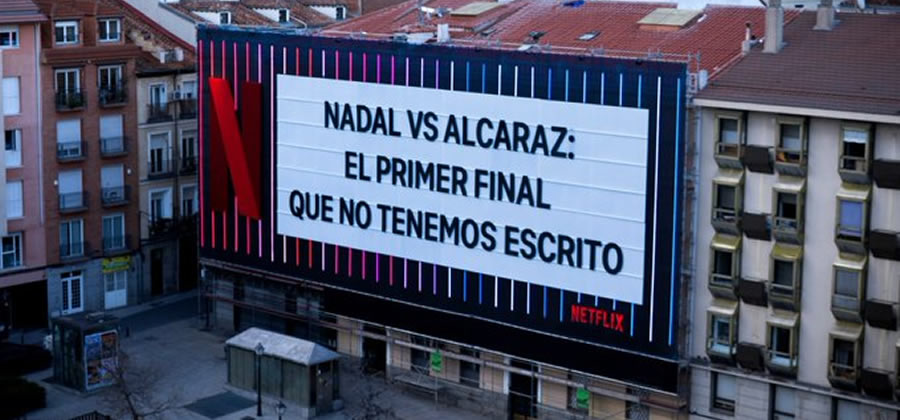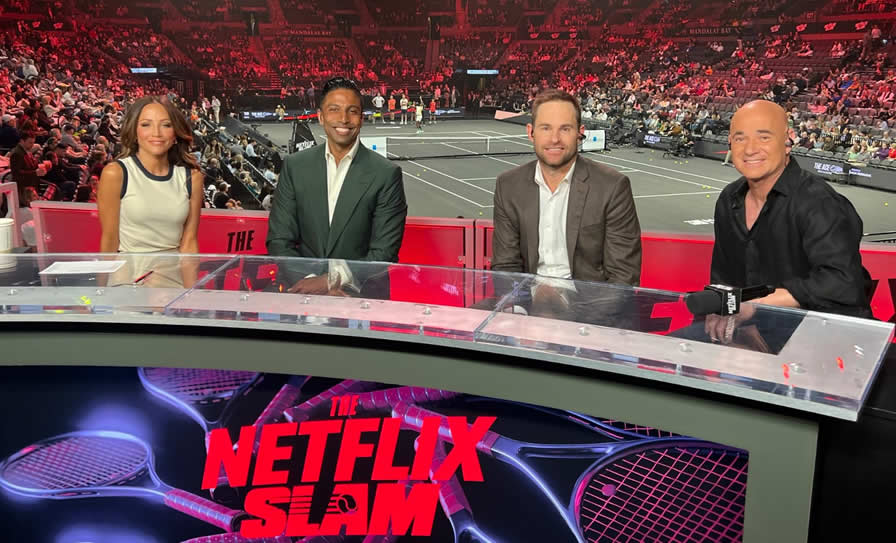After The Netflix Slam, with Nadal and Alcaraz, the streaming giant announced the boxing match between Jake Paul and Mike Tyson. How should we analyze these Netflix incursions with live sports?

We haven’t finished putting the rackets in the bag after The Netflix Slam, with Rafa Nadal and Carlos Alcaraz in Las Vegas, that already the streaming giant invites us to put on the gloves for another live event: Jake Paul vs. Mike Tyson. An internet celebrity turned boxer will face a boxer turned media personality. Netflix will once again put the watermark that says “live” on screen.
Paul and Tyson will fight in Arlington, Texas. It will be on July 20, a Saturday night, which is when boxing and television built a profitable, decades-long alliance that dominated the industry’s sports ecosystem with the creation of pay per view in the 1980s. Netflix will now put all the power of its streaming to mount another sports show of its own and occasionally return to being a platform that offers live content.
First a fun atmosphere golf tournament between golfers and Formula 1 drivers. Then a tennis exhibition with celebrities in the main boxes. In July a boxing evening and in 2025 it will be the extravagant fights of the WWE, an organization with which they signed a ten-year contract.
How should we analyze Netflix’s forays into live sports? The first feeling is that as viewers we seem to be part of an experiment, a work in progress, in which the platform seems to be in full research on behaviors, content tracking and a new way of presenting a show that has sports as input. We are on the total side of sportainment and less in the universe where the competitions broadcast on TV then impact on leaderboards, ranking points or Olympic laps.
A clear sign is that Netflix presents sport to us as a TV show format where it can control every part of the process, but with a characteristic that is intrinsic to sport and makes it unique as a phenomenon: it is a story of which even Netflix does not know the ending. That concept was used to promote the Alcaraz and Nadal match: “Nadal vs. Alcaraz, the first ending we don’t have written”.
The Netflix Slam was a classic tennis match. One of those that many of us already watched if we follow tennis as entertainment as well as a news generator. But Netflix gave a cinematic quality to the content. It was a film-quality tennis match, but within the parameters of a convention. Netflix had already made that clear when it sought to differentiate it from The Netflix Cup experience, the event with golfers and car drivers.

nother noteworthy fact is that the match between Alcaraz and Nadal behaved like a real live content: it had almost no long tail behavior over the days. It went on and off, as it happens with events that have their value through live.
According to FlixPatrol data that offers some consumption metrics, The Netflix Slam was as a top ten show in the following countries:
Argentina #8
Bolivia #10
Canada #10
Ecuador #10
France #10
United States #7
In Spain it was #1 on Sunday, #5 on Monday and #7 on Tuesday.
Sports properties, who negotiate broadcasting rights for competitions and also generate content based on those competitions, always had expectations about Netflix’s landing in sports. The truth is that Netflix has long been in sports, but it doesn’t end up playing the game everyone expects with live streaming as a company pitched to buy rights. That’s not happening. We don’t know if it will ever happen.
This is where the map of live sports streaming needs to be turned around. Because that’s the vision Netflix has with its current approach to a type of content that is novel to its familiar business model: “While most other networks have live programming and documentary programming as an extension, we’re looking at it a little bit the other way around,” said Gabe Spitzer, Netflix’s VP of Non-Fiction Sports, in response to a query from Sportico. Already the name of his position defines the platform’s line of work with live sports.

When we flip the Netflix map over, we observe that it is as they tell it. Drive to Survive, the series that invented a format for sports that Netflix designs like no one else, offers the sensation of watching live sports without being live and also allows Netflix to exploit this long tail content as it happens with series and movies.
Already with the sixth season launched, in 2023, the visualizations of the previous five seasons continue to work with a forcefulness that amazes. Let’s look at more numbers from FlixPatrol on Drive to Survive viewing hours in 2023 alone. Recall that the series premiered in 2019:
Season 1: 13.6 million hours
Season 2: 9.2 million hours
Season 3: 9.4 million hours
Season 4: 13.7 million hours
Season 5: 90.2 million hours
Drive to Survive became the generic sports series. Each organization wanted its own. This is how Break Point (tennis), Full Swing (golf) and similar shows about cycling, rugby and soccer came about. The impact of these types of productions is not even: after the Nadal-Alcaraz match, it became known that Break Point was cancelled after two seasons that did not move the needle. Therein lies another of Netflix’s assets: its content offerings shape the entertainment world’s conversation agenda. Break Point did not reach that threshold.
But the factory doesn’t stop. If we omit intro, we’ll quickly see that Netflix is also creating its own script with respect to the sport a live.
With an ending we probably don’t know yet, and perhaps, neither do they.